
Frogs and toads, the Anura, are amphibians, a group of vertebrates that first evolved in the Devonian era, about 400 million years ago. Two other groups of amphibians are the Caudata, salamanders and newts, and the Gymnophiona, caecilians. More than four thousand species of frogs and toads currently inhabit the planet. In contrast, about 400 species of salamanders and newts and 165 species of caecilians are extant. Frogs and toads thus account for approximately 88 percent of all living amphibians. Amphibians have many unique characteristics that separate them from other vertebrates. In terms of skeletal features, the skull articulates with the vertebral column by a specialized vertebra called the atlas, and ribs are lacking in most frogs and toads. Many amphibians have a twophase life history, an aquatic larval stage and a terrestrial adult stage, although some species may be entirely terrestrial or entirely aquatic. Amphibian skin is unlike that of other vertebrates in that it is glandular and lacks scales, feathers, or hair. Respiration is by means of the skin, which is porous, freely permitting the exchange of oxygen and carbon dioxide, with gills in aquatic larvae and adults, and lungs in terrestrial species. Scientists classify frogs and toads into twentyfive families. Although the terms "frog" and "toad" are commonly used, toads are simply a specialized group of frogs. The true toads are in the family Bufonidae. They are distinguished from other families by a number of osteological (bony) features, and they also typically have thick, glandular skin with wartlike pustules. Many species have large parotoid glands that produce toxic secretions located on the back of the head. In contrast, most frogs have smooth skin and no parotoid glands. Toads in the family Bufonidae can generally withstand drier conditions than frogs. Other kinds of frogs have common names that include the word "toad", such as spadefoot toads, which are in the family Pelobatidae, or narrowmouthtoads, which are inthe family Microhylidae.
Anatomy of Adult Frogs and Toads
Frogs and toads are tailless amphibians. In general, they are small animals; the largest has a body length of about three hundred millimeters, whereas the smallest is under ten millimeters. They have a truncated body with a greatly reduced number of vertebrae and elongated hindlimbs. The vertebrae in the lower part of the body are fused into a rodlike structure, which provides rigidity for their jumping mode of locomotion. Two types of glands are present in the skin of all adult amphibians: mucous and granular. Mucous glands continuously secrete mucopolysaccharides, which function to keep the skin moist so that cutaneous respiration can occur. All amphibians, including frogs and toads, have granular or poison glands in their skin, and these glands produce a variety of toxic or noxious chemicals used for defense. The chemicals are broadly classified into four major groups, of which alkaloids are one. The great majority of these chemicals are not harmful or deadly to humans, but they can be irritating. For example, if a secretion from one of the tree frogs found in the eastern United States is rubbed into the eyes, an intense burning sensation will be felt for a short time. If a frog or toad is grabbed by a predator, such as a bird or a snake, it may be quickly released because of the bad-tasting secretion. Some predators have evolved an immunity to the secretions, however, so frogs and toads are not free from predation.
Anatomy of Tadpoles
Frogs and toads are unique among amphibians in that the young, called tadpoles, are very different from adults in morphology and physiology. Tadpoles typically have a round, globular body, with a long tapering tail. After a period of time that varies from one to two weeks to several years, depending on species, the larval forms undergo metamorphosis and change into adult frogs. Many radical changes, initiated by the hormone thyroxin, occur during this period. The most obvious of these is the loss of the tail, which is gradually absorbed, and the growth of the limbs. The hindlimbs begin to develop early in the tadpole stage, but are held flat against the body and are not used until they are quite large. The front limbs develop at the same rate, but they are hidden beneath the operculum, a thin layer of skin that covers the gills. At metamorphosis, as the tail is absorbed, the hindlimbs enlarge and the forelimbs break through the operculum. The tadpoles of most species of frogs are herbivorous or detritivorous, and the digestive system consists of a long, coiled intestine. At transformation, the digestive system undergoes a radical modification, and the long, coiled intestine becomes greatly shortened and divided into a distinct esophagus, stomach, small intestine, and large intestine. The internal gills of the tadpole are lost, and the lungs become fully functional. In many species, the lungs begin to develop and become partially functional long before metamorphosis. Tadpoles of these species are frequently seen rising to the surface of the water to gulp air. Tadpoles have unusual mouthparts, consisting of a fleshy disc surrounded by small papillae; the disc has rows of small "teeth" that are not the same as the teeth of the adult. The actual opening of the mouth is surrounded by beaklike structures that have sharp, serrated edges. The rows of teeth serve to anchor the disc, and the beak is used to scrape algae and other detritus from the substrate. The food is captured by strands of mucus in the mouth that carry it into the digestive tract. At metamorphosis, the tadpole's mouthparts are completely shed and the adult mouth develops.
Life History of Frogs and Toads
The life history of frogs and toads includes four stages: egg, larva, juvenile, and adult. Eggs consist of an egg cell supplied with yolk surrounded by a varying number of mucoid capsules. Because the eggs have no shells and are susceptible to drying out, they must remain in water or in a humid environment. In temperate zones (nontropical areas), frogs and toads generally breed in the spring and summer when temperature and moisture conditions are suitable. Some, such as chorus frogs, spring peepers, and wood frogs, begin breeding very early, usually in February, while ponds are still covered with ice. Others, such as American toads and leopard frogs, breed later in the spring, and still others, such as bullfrogs and cricket frogs, breed primarily in the summer months. Most temperate-zone frogs migrate to ponds during rains to breed. Males arrive first and begin calling to attract females. Each species of frog and toad has a unique call, so it can be identified only by sound. Frogs make more than one kind of call. The most common calls, termed advertisement calls, are of three kinds: the courtship call, which is used to attract females; the territorial call, used in response to the call of a nearby male that may be intruding on the caller's territory; and the encounter call, used when two males in a breeding chorus are very close. The latter call may be accompanied by grappling or fighting between the two males. Although female frogs do not make advertisement calls, those of some species (and males, too) can produce a very dramatic distress call when grabbed by a predator. This call is produced with the mouth wide open and is a very loud piercing scream. Some types of predators are startled by this call and will release the frog. Snakes, however, have no ears and do not seem to be affected by the distress call. Frogs and toads have external fertilization. When a female approaches and nudges a calling male, he will climb atop her and clasp her with his arms behind her arms; this position is called amplexus. The pair floats in the water and simultaneously expels eggs and sperm in the water; thus, fertilization of the eggs occurs outside the female's body. Eggs generally require several days to one week to hatch, depending on temperature and the species of frog or toad. After hatching, tadpoles of most species disperse throughout the pond to feed and grow. Tadpoles of some species, however, congregate together in schools, similar to fish. Many species of toads, for example, have small, black tadpoles that form tight schools in shallow water at the edges of ponds. Most tadpoles eat algae and other kinds of detritus that they scrape fromthe substrate of ponds or streams in which they live. A few kinds of tadpoles are predaceous and eat other tadpoles or mosquito larvae and other small aquatic insects. Tadpoles undergo a period of development and then metamorphose into the adult body shape. Frogs and toads have evolved numerous ways of removing their eggs or tadpoles from aquatic situations, where, presumably, density of egg and tadpole predators is high. Scientists have identified thirty kinds of reproductive modes in frogs and toads, mostly in tropical species. Because tropical regions have high rainfall and warm temperatures, frogs can deposit their eggs on land without risk of desiccation.
Declining Amphibian Populations
Populations of frogs and toads in many parts of the world, even in pristine (undisturbed) locations, are declining and disappearing. The causes of these declines are numerous, and many scientists arenowconducting research to determine the causes of the declines. Some of the causes are obvious. For example, habitat destruction is a major cause of loss of many animals and plants, not just amphibians. Most recently, frogs and toads of many species in rain forests in Central America and Australia are reported to have been killed by a type of fungus called a chytrid. The fungus normally infects decaying matter, so why it is now infecting frogs is not yet understood. One theory is that frogs are being stressed by some other environmental problem not yet identified; this stress may reduce the ability of their immune systems to fight disease. Also being investigated as possible causes of frog population declines are the use of agricultural chemicals and pesticides, acid rain, ozone depletion leading to a rise in ultraviolet (UV-B) radiation, environmental estrogens, and introduction of fish that prey on eggs and tadpoles. It is possible that at any one location, one or several of these factors may be interacting.
Frogs and Toads Facts
Classification:
Kingdom: Animalia
Phylum: Vertebrata
Class: Amphibia
Subclass: Lepospondyli
Order: Anura
Families: Twenty-five, including Ascaphidae (tailed frogs), Bufonidae
(true toads), Centrolenidae (glass frogs), Dendrobatidae (poison
frogs), Hylidae (treefrogs), Leptodactylidae (tropical frogs), Microhylidae
(narrowmouth toads), Pelobatidae (spadefoot toads),
Ranidae (true frogs)
Geographical location: Throughout the world, except for the Arctic,
Antarctica, some oceanic islands, and some very dry deserts
Habitat: Many habitats, including forests, savannas, prairies, freshwater
ponds and streams, and ephemeral pools
Gestational period: Varies among species; some toads and spadefoot
toads have a tadpole stage that lasts only for ten days to two weeks;
in other species, such as bullfrogs, the tadpole stage may last for
three years; in many species, the tadpole stage extends for about two
months
Life span: Varies among species; less than a year in many species to as
much as six to thirty-six years in some species, particularly for individuals
kept in captivity
Special anatomy: Truncated head and body with no neck; long back
legs that facilitate jumping; tadpole anatomy, globose body with
long tail, very different from adult body shape
Other popular Animals
Photo Gallery of - Frogs and Toads
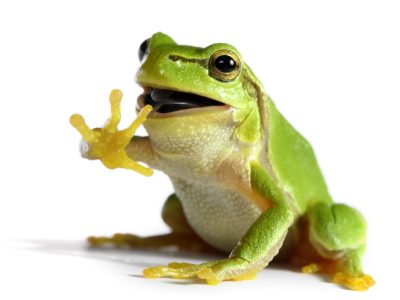
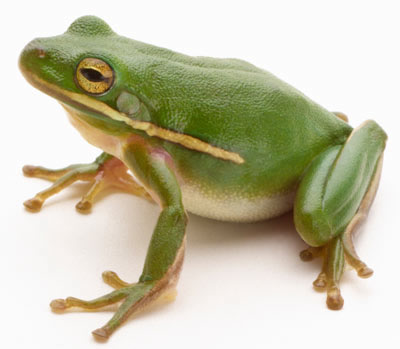
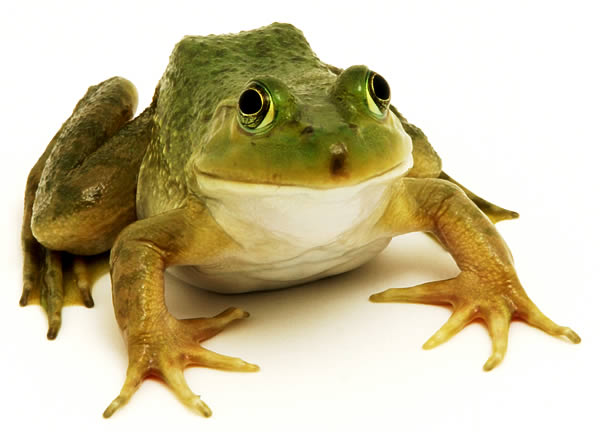
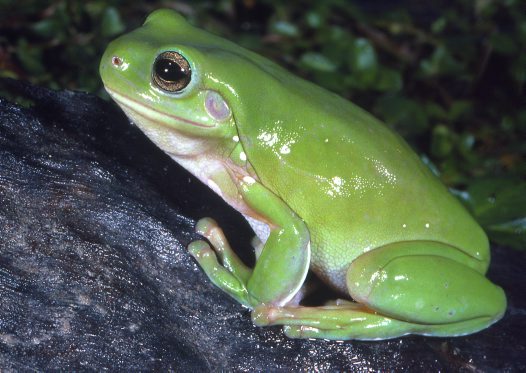
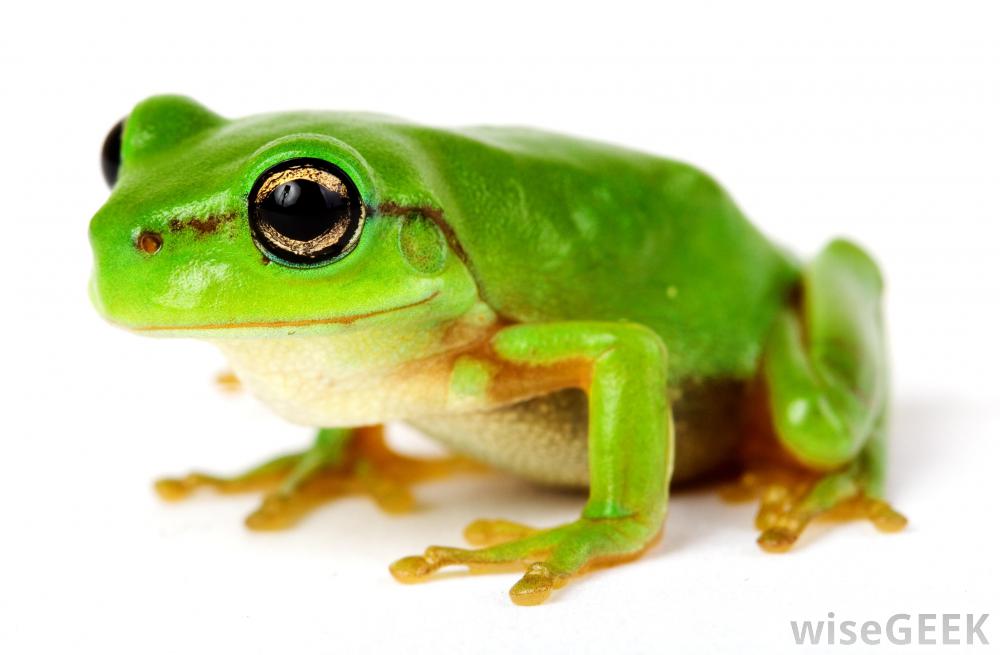

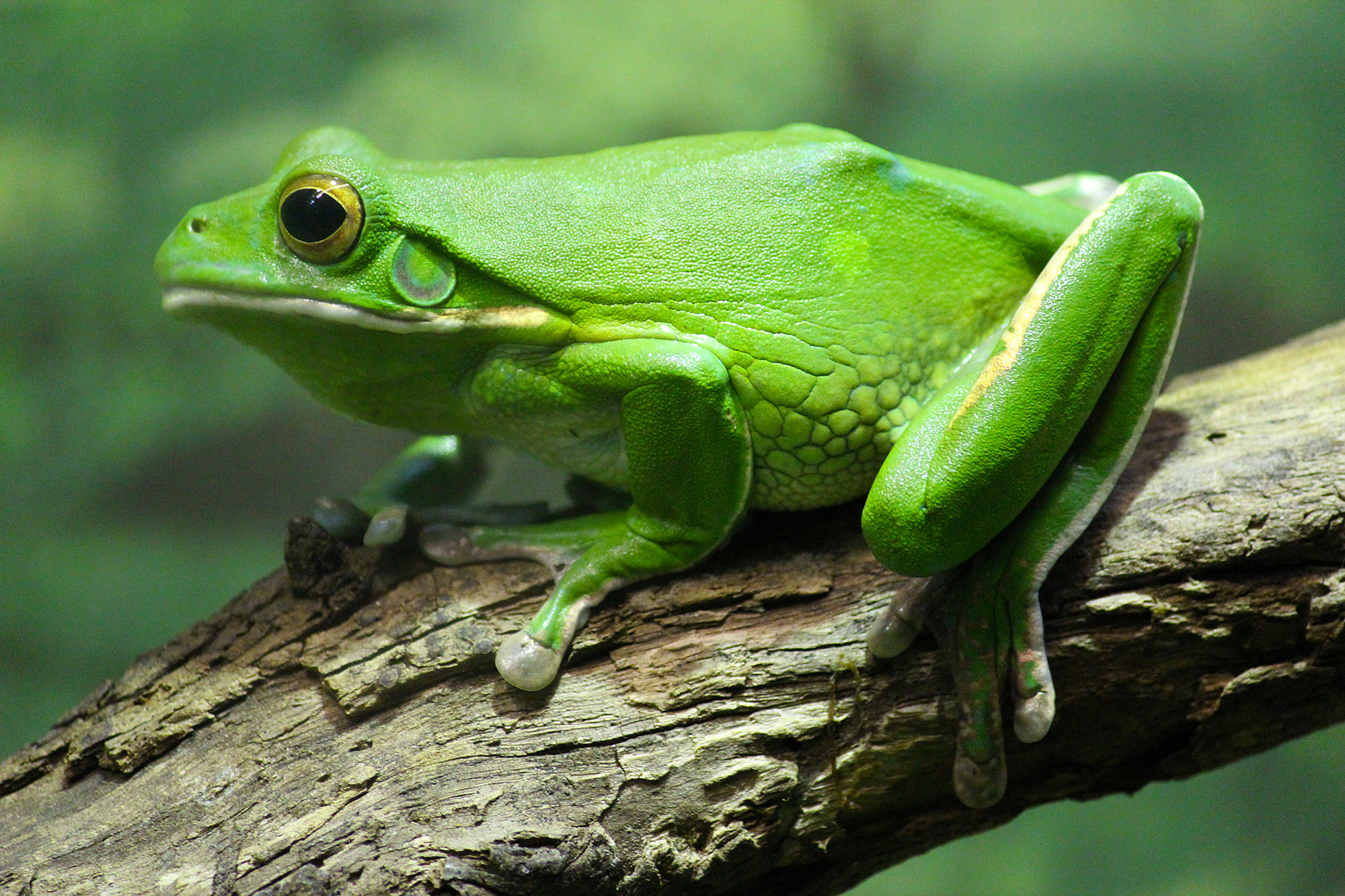

 Animalia Life
Animalia Life